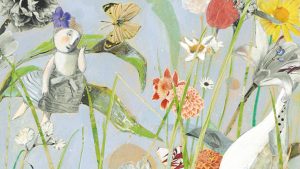Finding a personal and original synthesis of reality is not easy, because we often tend to copy a synthesis that other illustrators or artists have already found, without really understanding ‘because’ that way of drawing communicates an emotion or another. How, then, can we find our own synthesis, our own unique and unmistakable sign? Style is the best tool to give a certain taste to a story, a certain narrative tone: be it poetic, dreamy, ironic or dramatic. Style also should know how embody itself in a composition: passing through lines, colours, perspectives, strokes and signs. How do a pictorial technique and a style interact? We will therefore learn to look, as if for the first time, objects and forms in real life, in order to find our own unmistakable and original synthesis.
We will explore three great style groups: realistic, lyric and graphic, in orderd to understand which emotions do they communicate. We will learn how not to lose the mark of our sensibility in the event that we are required to adapt it to a text, or to the publishing market demands. The teaching methodology of the course aims at introducing creative exercises on texts and poetries, experimentations with different pictorial techniques (monotype, wax engraving, acrylic, collage) and at providing some background theory on the style of the greatest illustrators of the past and of the present, in order to discover all their secrets.
Every trainee will be followed in therealization of a final illustration for each of the styles introduced. These techniques are the perfect tool to get over our fear to make mistakes.
Program
The line: different types of contour lines of the characters.
The chiaroscuro: how it is realized; what is its purpose; what happens if we don’t use it.
How forms and colours communicate emotions: chromatic combinations; the main tricks for an effective image composition; the language of abstract art.
Realistic, lyric and graphic styles: the great stylistic families, following on the examples of the albums that constitute the history of illustration.
Styles and texts: how to suit the style for a type of text.
Finding our own style: exercises to learn and to trust on our individual expressive universe.
The course is aimed at whomever is looking for his/her own style, in order to become an illustrator or for personal passion, to participate in a contest or to introduce himself/herself to a publisher; or to whomever believes to already have his/her own style, but wishes to make it even more expressive.
Every trainee will be followed individually, regardless of his/her level.
The course is open to teenagers (provided they are able to face seven hours in class per day) and adults.
More information about this course at this link:
http://www.lefiguredeilibri.com/2013/03/21/alla-ricerca-del-proprio-stile-corso-con-anna-castagnoli-sarmede-giugno-2013/





